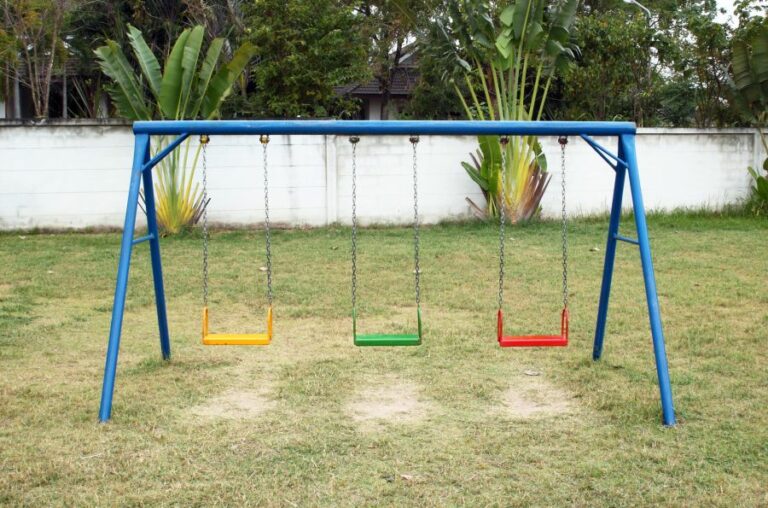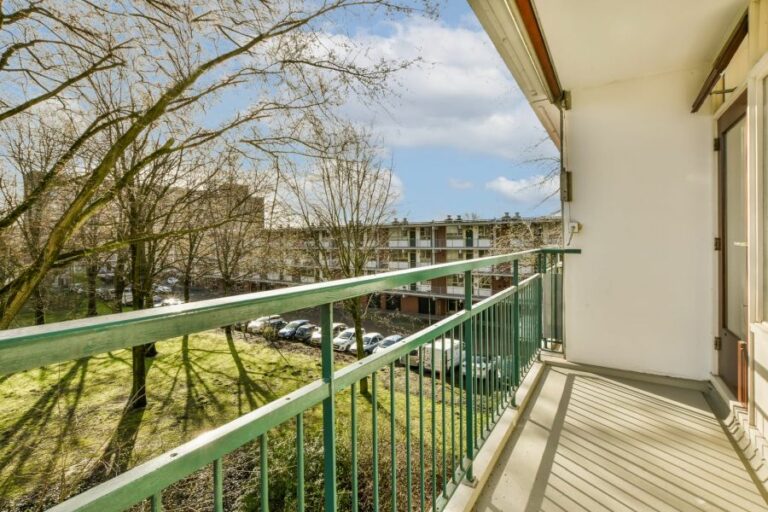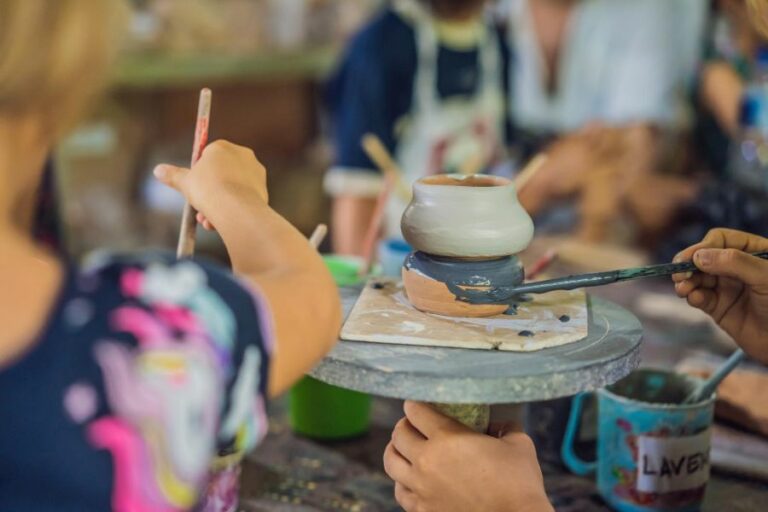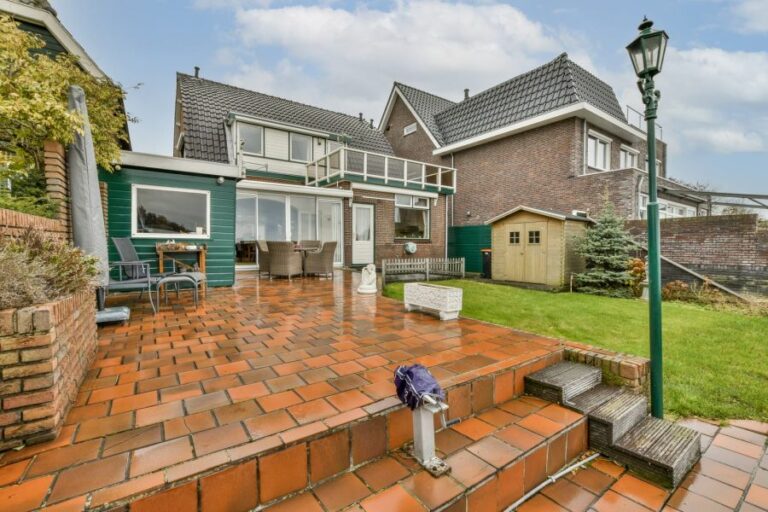Ultimate Guide to Selecting the Right Outdoor Floor Paint
Discover the transformative power of paint as we unveil the secrets to choosing the perfect outdoor floor paint for your space. Breathe new life into your patios, pathways, and driveways with vibrant colors and durable finishes.
Our comprehensive guide, ‘Paint for Outdoor Floor,’ will walk you through selecting, preparing, and applying the right paint to ensure a stunning and long-lasting result. Say goodbye to dull, worn-out surfaces and elevate your outdoor flooring game as we explore the latest trends, tips, and exterior paint techniques.
Paint for an outdoor floor:
Selecting the right paint for outdoor floors is critical for aesthetic appeal and protection from harsh elements. Various paint types, such as epoxy, acrylic, oil-based, and elastomeric, cater to specific outdoor surfaces. Factors to consider include surface type, durability, weather resistance, traffic, safety, aesthetics, and environmental concerns. Proper preparation, application, and adherence to the manufacturer’s instructions and weather conditions will ensure a beautiful, well-protected outdoor floor.

Discover the best outdoor floor paint options to revitalize, protect, and enhance your space. Learn about different types, durability, application techniques, and budget-friendly choices. Unleash your creativity and give your outdoor oasis a stunning makeover. Keep reading for detailed insights and expert advice!
Contents
- 1 Choosing the Right Paint for Your Outdoor Floor
- 2 What is the Optimal Exterior Floor Paint for Superior Results?
- 3 Which Type of Paint is Best Suited for Outdoor Concrete Flooring?
- 4 Is it Possible to Apply Paint on Outdoor Flooring?
- 5 What is the Finest Outdoor Porch Floor Paint for Optimal Performance and Aesthetics?
Choosing the Right Paint for Your Outdoor Floor
Selecting the right paint for outdoor floors is crucial for aesthetic appeal and protecting the surface from harsh elements.
This comprehensive guide will explore the different types of paints available, the factors to consider when choosing the right paint, and some valuable tips on the application process.
• Types of Paint for Outdoor Floors
Various floor paints are available in the market, each formulated to cater to specific outdoor floor surfaces. Some of the most common types include:
– 1. Epoxy Paint
Epoxy paint is popular for outdoor floors, particularly for concrete surfaces. It is a two-part paint made from an epoxy resin and a hardener, offering exceptional durability, strength, and resistance to wear and tear.
Epoxy is also known for its outstanding adhesive properties, making it an excellent choice for surfaces with heavy foot or vehicle traffic. Additionally, it offers good resistance to chemicals, water, and UV rays.
– 2. Acrylic Paint
Acrylic paint is another widely used paint for outdoor floors, as it can withstand harsh weather conditions and resist fading due to sun exposure. Acrylic paint is water-based and comes in various finishes, such as matte, satin, and gloss. It adheres well to wood, concrete, and asphalt surfaces and quickly dries.
– 3. Oil-Based Paint
Oil-based paint is durable and long-lasting, making it an ideal choice for wood and other porous surfaces. It is resistant to water and mildew, preserves the wood from rotting, and provides a rich, deep color.
However, it has a longer drying time compared to acrylic paint. It emits VOCs (volatile organic compounds) that contribute to air pollution and can harm one’s health when inhaled.
– 4. Elastomeric Paint
Elastomeric paint is specially designed for exterior floors and is perfect for surfaces prone to cracking, as it can stretch and accommodate small movements.
This paint forms a thick, elastic, and waterproof coating, making it ideal for wood, stucco, masonry, and concrete surfaces. It is also excellent in hiding imperfections and preventing water infiltration.
• Factors to Consider When Choosing Outdoor Floor Paint
There are several factors that you need to take into account when choosing the right paint for your outdoor floor, some of which are detailed below:
– 1. Type of Surface
Different types of paint adhere differently to various surfaces. Choosing the right paint specifically formulated for your floor material is vital, whether concrete, wood, asphalt or any other type.
– 2. Durability and Weather Resistance
Outdoor floors are exposed to the elements and must withstand harsh weather conditions like rain, snow, and sun exposure. Choosing a paint that offers good resistance to water, UV rays, and temperature fluctuations is crucial.
– 3. Traffic
The amount of foot and vehicle traffic on the floor will influence the durability and longevity of the paint. Floors with heavy traffic will require a more resilient paint, such as epoxy.
– 4. Safety
Outdoor floors can become slippery when wet, posing a safety hazard. Opt for a paint that offers slip resistance, such as textured or anti-slip paint, to ensure the safety of users.
– 5. Aesthetics
The paint’s color and finish will impact your outdoor space’s visual appeal. Consider the existing colors of your exterior and surrounding elements when selecting a paint color.
– 6. Environmental Concerns
If you are concerned about the environment and health, opt for low-VOC or water-based paints, as they emit fewer harmful chemicals than oil-based paints.
• Tips on Applying Paint to Outdoor Floors
- Ensure the surface is clean and dry: Before painting, thoroughly clean the surface, removing any dirt, debris, or grease. If the surface is porous, like concrete, patch any cracks, holes, or imperfections before starting the paint job. Make sure the surface is completely dry before applying the paint.
- Prime the surface: Priming the outdoor floor ensures better paint adhesion, provides additional protection and enhances the paint’s color and finish.
- Use the appropriate tools: Depending on the type of paint and surface, use suitable tools such as rollers, brushes, or sprayers to ensure an even and professional-looking finish.
- Follow the manufacturer’s instructions: Pay close attention to the manufacturer’s guidelines on application, drying time, and the number of coats needed, as these steps may vary depending on the type of paint.
- Keep weather conditions in mind: Avoid painting on extremely hot, cold, or humid days, as these conditions can affect the paint’s drying time and overall finish.
• Conclusion
In conclusion, choosing the right paint for your outdoor floor can greatly impact your exterior space’s aesthetic appeal, durability, and safety. Consider the abovementioned factors and select the appropriate paint type based on the surface material and specific requirements.
Proper preparation and application allow you to enjoy a beautiful, well-protected outdoor floor for years.
What is the Optimal Exterior Floor Paint for Superior Results?
Outside floor paint can transform your home’s exterior, adding beauty and durability. Choosing the right paint is crucial to your space’s look and functionality. We will guide you through the best outdoor floor paint options, discussing various factors such as material, finish, durability, and ease of application.
• Top Choices in Outside Floor Paint
Based on years of experience, here are some recommendations for the best outside floor paint options on the market:
– Epoxy-Based Paint
Epoxy-based paints are one of the most popular options for outside flooring, primarily because of their durability and resistance to harsh weather conditions. They provide a high-gloss, smooth finish that protects surfaces from stains, cracks, and damage caused by water or chemicals.
Pros:
- Extremely durable and resistant to wear
- Good for high-traffic areas
- Provides a waterproof and chemical-resistant barrier
- High-gloss finish adds an attractive appearance
Cons:
- Can be difficult to apply it evenly
- May need professional installation for the best results
- Can be slippery when wet, requiring the addition of anti-slip additives
– Acrylic Latex Paint
Acrylic latex paints are water-based paints with added acrylic resins, which offer excellent adhesion and resistance to weather. They come in various colors and finishes and are relatively easy to apply.
Pros:
- Easy to apply and dries quickly
- Wide range of colors and finishes are available
- Resistant to fading, cracking, and peeling due to weather exposure
- Can be cleaned easily with soap and water
Cons:
- Not as strong and durable as epoxy-based paints
- May require multiple coats for proper coverage
- Can be susceptible to mold and mildew growth if not properly sealed
– Concrete Stain
Concrete stain is a unique alternative to traditional outside floor paints, adding color to the surface while allowing the natural texture and patterns of the concrete to show through. It can be applied to both new and old concrete surfaces and creates a semi-transparent, natural-looking finish.
Pros:
- Creates a unique, semi-transparent finish
- Enhances the natural texture and pattern of concrete
- Can be applied to new or old surfaces
- Available in a variety of colors and shades
Cons:
- Not as strong and durable as other paint options
- Needs to be sealed after application to protect it from wear
- May require multiple coats for desired color depth
• Choosing the Right Finish
Outside floor paint is available in various finishes, including matte, satin, semi-gloss, and high-gloss. The finish you choose will impact your space’s overall appearance and functionality.
- Matte: Matte finishes have a subtle, non-reflective surface that can hide imperfections and create a soft, muted appearance. However, they can show dirt and wear more easily than other finishes.
- Satin: Satin finishes balance matte and glossy finishes, providing a soft sheen without being overly shiny. They are durable and can withstand moderate foot traffic.
- Semi-Gloss: Semi-gloss finishes have a higher sheen than satin finishes and are more resistant to wear and moisture. They are good for high-traffic areas but can show imperfections more easily than matte or satin finishes.
- High-Gloss: High-gloss finishes provide a smooth, reflective surface that adds visual interest and depth. They are the most resistant to wear and staining but can show imperfections and be slippery when wet.
• Factors to Consider When Choosing Outside Floor Paint
When selecting the best outside floor paint for your home, consider the following factors:
- Material: Ensure the paint you choose is compatible with the material of your outside flooring, such as concrete or wood.
- Foot Traffic: Consider the level of foot traffic your outside area receives and choose a paint that can withstand wear and tear.
- Weather Exposure: Consider the climate in which you live and choose a paint that can withstand your area’s specific weather conditions, such as heat, cold, or humidity.
- Ease of Application: Some outside floor paints require professional installation, while homeowners can easily apply others. Choose a paint based on your level of expertise and willingness to spend time and resources on the project.
- Maintenance Requirements: Consider how much maintenance the painted surface will need, such as reapplying the paint or sealing the surface.
• Application Tips for Outside Floor Paint
To ensure the best results when applying outside floor paint, follow these tips:
- Prepare the Surface: Thoroughly clean and etch the surface, repairing any cracks or damage before painting. This step is crucial for proper paint adhesion.
- Choose the Right Paint: Select a high-quality outside floor paint specifically designed for use on the material of your floor.
- Apply Primer: If the paint manufacturer recommends, apply a primer to the surface before painting to improve adhesion and coverage.
- Paint in the Right Conditions: Choose a day with favorable weather, including moderate temperatures and low humidity.
- Follow Manufacturer’s Instructions: Read and follow the specific application instructions the paint manufacturer provides.
- Work in Small Sections: To ensure even coverage, apply the paint in small, manageable sections.
- Allow Proper Drying Time: The paint will dry according to the manufacturer’s recommendations before using the area or applying additional coats.
By considering the factors discussed earlier, investing in high-quality outside floor paint, and following proper application methods, you can achieve a beautiful, durable outside floor that enhances the aesthetic and function of your home.
Brand | Type | Color Options | Price Range |
|---|---|---|---|
Brand 1 | Acrylic | Multiple | $$ |
Brand 2 | Epoxy | Multiple | $$$ |
Brand 3 | Oil-based | Multiple | $$$ |
Brand 4 | Latex | Multiple | $$ |
Brand 5 | Urethane | Multiple | $$$$ |
Which Type of Paint is Best Suited for Outdoor Concrete Flooring?
When painting an outdoor concrete floor, selecting the right paint is crucial for a long-lasting and attractive finish. This article will discuss the various types of paint available on outdoor concrete floors, highlighting their benefits, drawbacks, and application methods.
I will also provide some essential tips for preparing and painting the concrete surface for a professional, durable result.
• The Importance of Choosing the Right Paint
Using the correct type of paint is essential for an outdoor concrete floor, as it must withstand harsh weather conditions, foot traffic, and other external influences. The paint must be specifically designed for concrete and have water resistance, UV protection, and durability properties.
Additionally, a non-slip finish is recommended to ensure safety when the surface is wet.
• Types of Paint for Outdoor Concrete Floors
Various paint options are available for outdoor concrete floors, each with unique benefits and drawbacks. The most popular paint types include epoxy paints, acrylic latex, and elastomeric.
– Epoxy Paints
Epoxy paints are popular for outdoor concrete floors due to their exceptional durability and resistance to chemicals, abrasion, and staining. These paints typically provide a high-gloss finish that is easy to clean and maintain.
Pros:
- Highly durable and long-lasting
- Resistant to chemicals, stains, and abrasion
- Easy-to-clean, high-gloss finish
Cons:
- May not be suitable for heavy foot traffic areas
- More expensive than other paint options
- Longer drying time
– Acrylic Latex Paints
Acrylic latex paints are a budget-friendly and easier-to-apply alternative to epoxy paints. They offer decent durability and resist common outdoor elements such as moisture and UV rays. Acrylic latex paints typically dry quicker and are easier to clean up than other paint options.
Pros:
- Budget-friendly
- Quick drying time
- Easy to apply and clean up
Cons:
- May not be as durable as epoxy paints
- Can be prone to peeling and chipping
- May require more frequent touch-ups
– Elastomeric Paints
Elastomeric paints are a more flexible and versatile option for outdoor concrete floors. They have excellent adhesion to concrete surfaces, making them ideal for filling cracks and bridging gaps. Elastomeric paints typically provide a durable, waterproof, and UV-resistant finish, making them perfect for outdoor use.
Pros:
- Excellent adhesion and crack-bridging ability
- Durable, waterproof, and UV-resistant finish
- Suitable for a range of outdoor conditions
Cons:
- Can be difficult to apply
- May require more coats for satisfactory coverage
- May be more expensive than other paint options
• Preparing Your Concrete Surface for Painting
Before you begin painting your outdoor concrete floor, it’s essential to prepare the surface correctly to ensure a successful and long-lasting paint job.
- Clean the surface: Remove all dirt, grease, and debris from the concrete floor using a pressure washer, stiff-bristle brush, or soap and water.
- Repair cracks and damages: Fill in any cracks or holes with a concrete patching compound, following the manufacturer’s instructions.
- Smooth the surface: Sand the concrete floor to remove rough or uneven spots, and vacuum or sweep away dust and debris.
- Apply a concrete primer: Use a high-quality concrete primer to ensure proper adhesion and coverage of the paint. Follow the manufacturer’s instructions for drying times and application methods.
• Applying the Paint to Your Outdoor Concrete Floor
Follow these steps to apply the chosen paint to your outdoor concrete floor and achieve a professional, long-lasting finish.
- Choose the right tools: Invest in high-quality paint rollers, brushes, or sprayers suitable for your chosen paint type.
- Apply the first coat: Apply the first coat of paint evenly over your primed outdoor concrete floor, ensuring you follow the manufacturer’s instructions for drying times and the recommended number of coats.
- Apply additional coats: If necessary, add additional coats of paint, allowing the appropriate drying time between each coat.
- Apply a protective sealer: To prolong the life of your painted outdoor concrete floor, consider applying a protective sealer or topcoat compatible with your chosen paint type..
In conclusion, selecting the right paint and following proper preparation and application techniques can ensure a long-lasting, attractive finish for your outdoor concrete floor.
By considering factors such as durability, weather resistance, and ease of application, you can decide on the best paint option for your specific needs.
Is it Possible to Apply Paint on Outdoor Flooring?
Painting outdoor flooring is an excellent way to refresh and protect your space while adding a personal touch with the colors and designs of your choice. However, some essential factors must be considered before jumping into the project.
I will discuss the various types of outdoor flooring suitable for painting, the process of painting, and the benefits of doing so.
• Outdoor Flooring Suitable for Painting
– Concrete or Cement
Concrete flooring is popular for outdoor areas such as patios, driveways, and sidewalks. Its durability and resistance to weathering make it a good candidate for painting. Proper preparation and the right type of paint will ensure a long-lasting, aesthetically pleasing surface.
– Wood
Wooden outdoor flooring includes decks, patios, and stairs. Wood is another popular option for outdoor spaces, but it requires specific steps and paint types to ensure a long-lasting finish that protects the wood from damage.
– Asphalt
Asphalt is primarily used for driveways and walkways; it can also be painted. Using the proper paint and application techniques will give your asphalt surface a new look and additional protection against wear and tear.
• Preparation: The Key to Successful Painting
Irrespective of the type of outdoor flooring, proper surface preparation is crucial for a long-lasting paint job. Here are the essential steps:
– Cleaning
Ensure the surface is clean and free of dirt, debris, and mold. Use a pressure washer to remove stubborn dirt from concrete and asphalt surfaces. A deck cleaner or a mild detergent with a soft brush can be used for wooden surfaces. Allow the surface to dry thoroughly before proceeding.
– Repairing
Inspect your outdoor flooring for any cracks, chips, or damaged sections that need repair. Fill any cracks or holes with an appropriate patching compound for concrete and asphalt surfaces.
For wooden surfaces, sand the surface gently to remove any peeling paint or loose fibers. Replace any severely damaged boards if needed.
– Priming
For best results, use a primer specifically designed for outdoor flooring surfaces. The primer will prepare the surface for painting, ensuring proper adhesion of the paint and a lasting finish.
Apply the primer according to the manufacturer’s instructions, and let it dry thoroughly.
• Choosing the Right Paint for Your Outdoor Flooring
Various types of paint are available for outdoor flooring, and choosing the right one for your specific surface is essential.
– Concrete Paint
Concrete floors can be successfully painted with acrylic or latex paint. These water-based paints are easy to apply and clean and provide excellent coverage. Two coats of paint are typically sufficient to provide a long-lasting finish.
– Wood Paint
For wooden surfaces, choose a paint designed explicitly for outdoor wood applications. These paints offer protection against UV rays, water, and insect damage. Look for paint products marked as ‘deck paint’ or ‘porch and floor paint.’
– Asphalt Paint
Asphalt surfaces require 100% acrylic paint designed to adhere to the unique texture of asphalt paving. These paints dry to a flexible finish that can withstand the expansion and contraction of asphalt in changing weather.
• Painting Techniques and Tips for Best Results
- Ensure the surface is completely dry before painting, as moisture can affect the adhesion of the paint.
- A roller can make painting quicker and more comfortable for large flat surfaces. Use a paintbrush for edges, corners, and any intricate details.
- Apply thin layers of paint to avoid a heavy, uneven finish. Allow each coat to dry thoroughly before applying the next coat.
- Follow the manufacturer’s instructions on your chosen paint for drying times and the recommended number of coats.
• The Benefits of Painting Outdoor Flooring
- Enhanced curb appeal: Fresh paint can instantly transform the look of your space, making it more inviting and appealing.
- Added protection: The right paint can offer additional protection to outdoor surfaces against weathering, wear and tear, and potential damage.
- Easy maintenance: A well-painted floor is easier to keep clean and maintain, as it is less susceptible to staining and damage.
- Personalization: Painting your outdoor flooring allows you to choose colors and designs that reflect your style and complement your home’s exterior.
In conclusion, painting your outdoor flooring is possible and beneficial in various ways. With the right preparation, paint selection, and technique, you can upgrade your space and protect it from damage.
Whether working with concrete, wood, or asphalt surfaces, a fresh coat of paint can make all the difference in your outdoor area’s appearance and longevity.
Type | Can be painted? | Recommended paint |
|---|---|---|
Concrete | Yes | Concrete paint or epoxy |
Wood | Yes | Deck paint or stain |
Asphalt | Yes | Asphalt paint |
Brick | Yes | Masonry paint |
Stone | Yes | Stone paint or sealer |
Tile | Yes | Epoxy paint or tile paint |
What is the Finest Outdoor Porch Floor Paint for Optimal Performance and Aesthetics?
When updating your outdoor porch, choosing the right paint is essential. Not only does the paint need to look good, but it must also stand up to the wear and tear of daily use and exposure to the elements. We will discuss the best outdoor porch floor paint options and what to consider.
• Factors to Consider Before Choosing Porch Floor Paint
Before diving into specific paint recommendations, it’s important to understand the key factors that contribute to high-quality porch paint:
– Durability
The paint you choose for your porch floor must withstand foot traffic and resist wear over time. This means looking for a product specifically designed for outdoor use with a proven track record of long-lasting performance.
– Weather Resistance
Your porch floor paint should be able to withstand various weather conditions, including heat, cold, rain, and snow. This means selecting a paint tested and rated for outdoor use and avoiding products intended for indoor use only.
– Adhesion
Great paint is only as good as its adhesion. Ensure you choose a paint designed for your porch’s specific surface material, wood or concrete. Proper adhesion helps the paint resist peeling and maintain an attractive appearance for years.
– Ease of Application
Even the best paint can be frustrating if it requires multiple coats or is difficult to apply evenly. Look for a paint that allows easy application, ideally with a single coat, and dries quickly for a smooth, even finish.
• Top Outdoor Porch Floor Paints
Now that we know what to look for in high-quality porch paint let’s explore some of the best options on the market.
– BEHR Premium Porch & Patio Floor Paint
BEHR Premium Porch & Patio Floor Paint is popular for wood and concrete surfaces. It offers excellent durability, weather resistance, and superior adhesion, ensuring the paint bonds well with the surface material. This paint is easy to apply – a single coat is often needed for full coverage.
It comes in multiple colors and finishes, allowing you to choose the one that best suits your home’s aesthetic.
– KILZ Interior/Exterior Enamel Porch & Patio Latex Floor Paint
KILZ’s offering is another top choice for outdoor porch floor paint. Suitable for wood and concrete, it’s designed to maintain its color and resist fading, even in harsh sun exposure.
With excellent adhesion and weather resistance, this paint will ensure your porch stays looking fresh for a long time. It dries relatively quickly, allowing for easy application and minimal downtime.
– INSL-X Sure Step Acrylic Anti-Slip Coating Paint
If safety is a concern, consider INSL-X Sure Step Acrylic Anti-Slip Coating Paint. This paint is designed to offer a non-slip surface, reducing the risk of slips and falls on your porch. It’s suitable for wood and concrete and boasts excellent durability and weather resistance.
The paint is easy to apply and provides a durable, wear-resistant finish that helps prevent peeling and chipping over time.
– PPG FLOOR & PORCH Interior/Exterior Latex Paint
PPG FLOOR & PORCH Interior/Exterior Latex Paint is another excellent choice for wood and concrete porches. With excellent durability, weather resistance, and adhesion, it will keep your porch looking fresh and well-maintained for years.
It’s also an easy-to-apply formula, ensuring a smooth and even finish that provides long-lasting protection against the elements.
– Diamond Brite Exterior Latex Floor & Deck Enamel
Lastly, Diamond Brite Exterior Latex Floor & Deck Enamel is reliable for wood and concrete surfaces. It offers outstanding durability, weather resistance, and adhesion.
This paint resists fading, peeling, and cracking, ensuring a long-lasting finish. Its smooth application makes it easy for homeowners to achieve professional-looking results.
• Conclusion
There isn’t a one-size-fits-all answer to the question of what the best outdoor porch floor paint is, but the options listed above are all strong contenders. Consider the factors discussed earlier, such as durability, weather resistance, adhesion, and ease of application, when selecting the best paint suited for your specific porch.
Investing in high-quality paint and preparing and applying the product properly can make you enjoy a beautiful, long-lasting porch that adds to your home’s overall appeal and value. Happy painting!
Rank | Brand | Product Name | Key Features |
|---|---|---|---|
1 | BEHR | BEHR Premium Low-Lustre Enamel Porch & Patio Floor Paint | – Interior/Exterior use – Weather resistant – Low-luster enamel finish |
2 | Glidden | Glidden Porch & Floor Paint and Primer | – Interior/Exterior use – Wear resistant – Stain resistant |
3 | Rust-Oleum | Rust-Oleum Porch & Floor Coating | – Urethane-fortified – Scuff and scratch resistant – Available in satin and gloss finishes |
4 | KILZ | KILZ Interior/Exterior Enamel Porch & Patio Latex Floor Paint | – Low-luster finish – Mildew-resistant – Suitable for all surfaces |
5 | INSL-X | INSL-X Sure Step Acrylic Anti-Slip Coating | – Anti-slip finish – Durable, abrasion resistant – Ideal for all types of surfaces |







